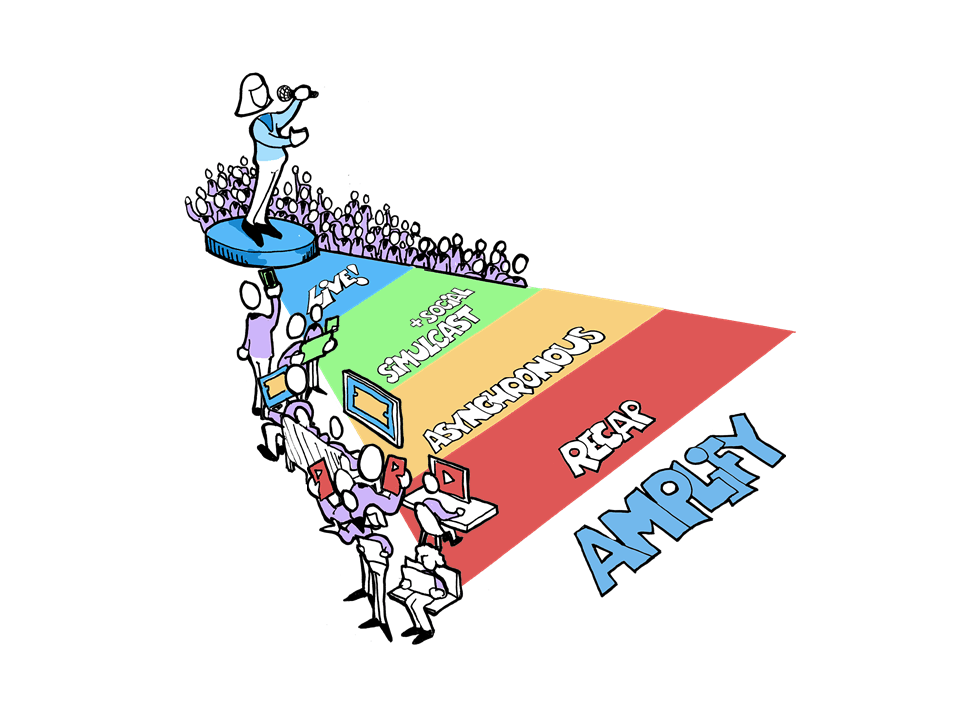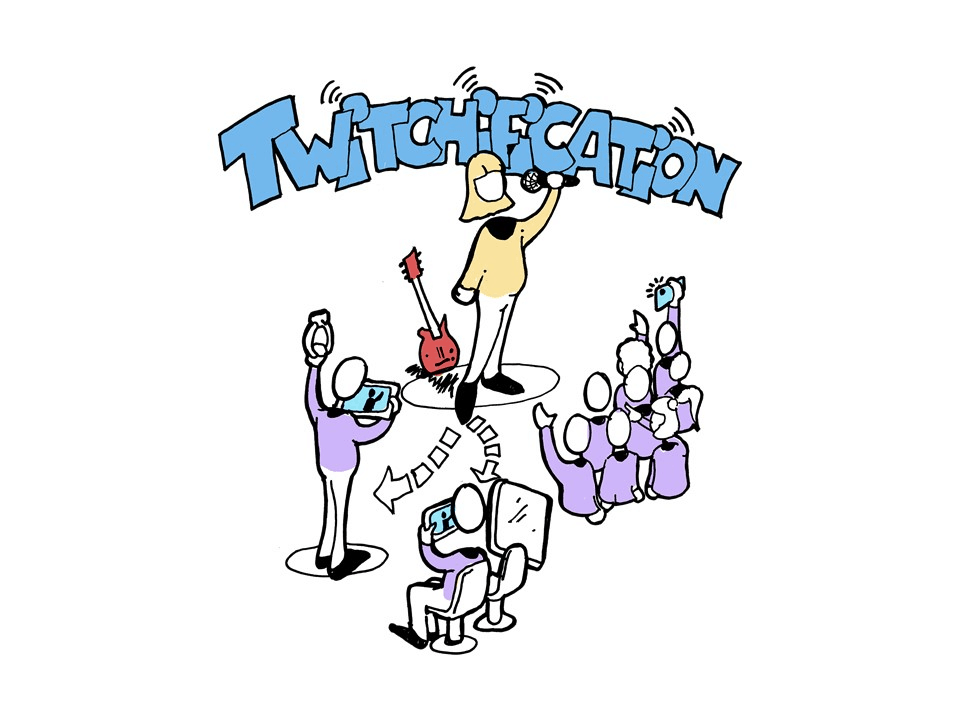As Jim Gilmore and I discuss in No Experiences, No Recovery, post-COVID-19 the Experience Economy not only must come back for economic recovery, it will come back. But in many situations it will be different.
I’ve already written about what companies should be doing differently to confront the corona crisis in this Thoughts post, and here I would like to amplify on one particular aspect that will be different, and that is, appropriately enough, experience amplification through hybrid experiences.
Experience Amplification Through Hybrid Experiences
Experience stagers have long amplified their experiences through social media, in particular with “pop-up” marketing experiences that engage a relatively few number of people physically, but then are filmed, edited, and put on social media to capture the attention of thousands, hundreds of thousands, even millions of potential customers.
Just one favorite example to illustrate the point: Marriott’s Teleporter (which as of this writing has over 290,000 views). Check it out, and then Google those two words and see how much more media sites and news stations further amplified this one-day physical experience into millions of media hits.
Now, as companies respond to the lack of people coming to physical venues, more and more of them have turned to digital events. But that alone is a poor substitute – and I am not talking about the virtual experience (which can be very poor, but also can be very good – it just depends on how well they embrace the principles of experience staging). Rather, it’s a poor business substitute as it has yet to prove capable of generating the same level of revenue.
The right approach, one that many companies are already employing, is to stage hybrid experiences that amplify the live experience virtually.
This approach doesn’t work everywhere, but can be especially effective for business conferences or huge consumer experiences such as sporting events, festivals, concerts, and other types of large gatherings. The hybrid experience model I see coming involves four levels.
The 4 Levels of The Hybrid Experiences Model
Level 1: The Live Experience
First, stage the live experience for however many people are allowed to attend and desire to do so.
These guests can be charged 100% of the standard admission fee, and perhaps even more if capacity is limited, as standard economic principles apply: the lower the supply, the higher the price (as long as sufficient demand exists).
Note, too, how whenever any type of experience (bars, restaurants, theme parks, sporting events, and so forth) opens up to whatever capacity the government allows, that capacity is pretty much reached immediately and persists. (The lone exception: movie theaters.)

Level 2: The Digital Simulcast + Social Experience
Second, simultaneously offer the experience digitally to those who want the live experience but cannot or are unwilling to attend it physically.
This same-time, different-place simulcast of the live experience can amplify it to many, many more people – potentially one or more orders of magnitude than could be there physically. These digital attendees can be charged some portion of the physical admission fee, potentially more than recouping the lost physical revenue.
Sporting events have long broadcasted live events to millions of spectators, and now do so on apps as well (where at least the MLB app charges for the virtual experience).
While perhaps only pay-per-view boxing approaches anywhere near a significant portion of the admission fee of the live event, most all sports leagues make more money from simulcasting than from physical spectators.
eSports Twitchification
But there’s one genre of sports that goes a step further: eSports.
Every other hybrid experience stager can learn from it.
The key element that enables watching people play videogames to actually be an amazingly engaging experience is the social media interactions that Twitch pioneered.

Few people watch the game action unaided; they tune in to one or more channels, where commentators put their own spin on the action and add in their own comments via chat or video. They thus shift from being mere spectators to full-on participants, enhancing the experience themselves for others.
How can you likewise embrace “Twitchification” in your live but virtual simulcast? Done well, these participants actually have a more engaging – and therefore more valuable – experience than those that are there in person.
For example, when keynoting at The Presence Summit this past July – a great event itself for learning how to take physical events virtual – I participated in “backchannel” rooms where people could talk to each other about what they were learning in the main event.
One gentleman I talked to said he was spending all his time in the backchannel, conversing with speakers like me and others who really engaged in the subject matter. He said he’d watch the videos later to get the content so as not to miss the conversations he could only get right there, right then!
Level 3: The Post Event Asynchronous Experience
Which in fact leads right into the third level in this hybrid experiences model: take all of your sessions of the experience (however you might define them) and offer them for sale on an asynchronous basis, after the event.
These ‘different-time, different-place’ viewers can absorb the bite-sized chunks you offer online whenever and wherever they desire – except in real-time, that is. That’s reserved for those who pay the higher fees for the live performance, whether in reality or virtuality.
But you could perhaps have another order of magnitude of people who would pay significantly less but collectively valuable amounts that yield yet another revenue stream.
TED, for example, created a virtual event for May-July 2020 called TED 2020: Uncharted where it offered one level of access for an admission fee of $10,000 that included the live, physical 2021 TED Conference in Monterey, CA, which was not included in the second level at $5,000. Both of these included Twitch-like “community interaction” during the event, but then it offered a third level at $1,000 for the live stream without the “interactive or networking elements”.
Level 4: The Recap
Because of TED’s global mission of offering “ideas worth spreading” it eventually puts all of its TED Talks online for anyone to view.
Similarly, any hybrid experience stager can at least summarize the highlights of the hybrid experience, in short, free videos on YouTube and other social media sites – generally better for commercial enterprises than allowing access to the entire event – to get even more people to wish they had been there live, and through such amplification create demand for the next experience.
Done well, for many experiences I fully believe this hybrid experience model has the potential to create more revenue than pre-COVID experiences that ignored virtual possibilities.



